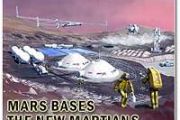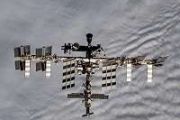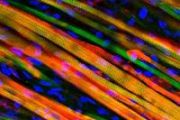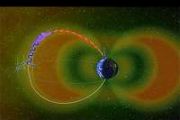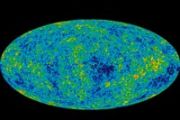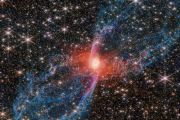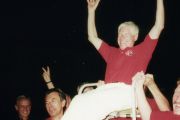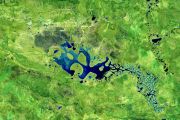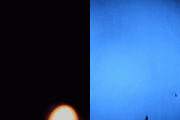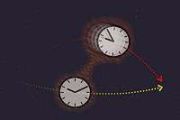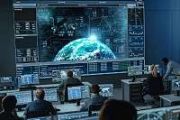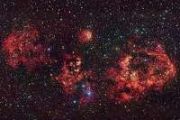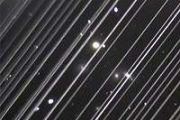
Copernical Team
Report that China building new ICBM silos 'concerning': US
 The United States expressed concern on Thursday over a report that China is building more than 100 new silos for intercontinental ballistic missiles.
The Washington Post, citing a study of commercial satellite images by a California-based group, reported on Thursday that the silos were being built in a desert near the northwestern city of Yumen.
The James Martin Center for Nonproliferati
The United States expressed concern on Thursday over a report that China is building more than 100 new silos for intercontinental ballistic missiles.
The Washington Post, citing a study of commercial satellite images by a California-based group, reported on Thursday that the silos were being built in a desert near the northwestern city of Yumen.
The James Martin Center for Nonproliferati NASA rocket, satellite tag-team to view the giant electric current in the sky
 Some 50 miles up, where Earth's atmosphere blends into space, the air itself hums with an electric current. Scientists call it the atmospheric dynamo, an Earth-sized electric generator. It's taken hundreds of years for scientists to lay the groundwork to understand it, but the principles that keep it running are only just now being revealed in detail.
Following up on its predecessor's 2013
Some 50 miles up, where Earth's atmosphere blends into space, the air itself hums with an electric current. Scientists call it the atmospheric dynamo, an Earth-sized electric generator. It's taken hundreds of years for scientists to lay the groundwork to understand it, but the principles that keep it running are only just now being revealed in detail.
Following up on its predecessor's 2013 Britain to spend $4.8M developing inter-missile communication system
 Britain invested $4.8 million for smarter missile systems - allowing munitions to communicate and react quickly to changing threats - the British Ministry of Defense said on Thursday.
The contract was awarded to the Defense Science Technology Laboratory for the Co-operative Strike Weapons Technology Demonstrator, which the British government is charging with improving current systems
Britain invested $4.8 million for smarter missile systems - allowing munitions to communicate and react quickly to changing threats - the British Ministry of Defense said on Thursday.
The contract was awarded to the Defense Science Technology Laboratory for the Co-operative Strike Weapons Technology Demonstrator, which the British government is charging with improving current systems Space Force selects first 50 transfers from Army, Navy, Marine Corps
 Fifty active-duty Army, Navy and Marine Corps personnel have been chosen to transfer to the U.S. Space Force and will join the branch in July, the Space Force said on Wednesday.
The group will test integration efforts to bring additional personnel into the new military branch, founded in 2019 with a mandate to deter aggression and protect the interests of the United States in space.
Fifty active-duty Army, Navy and Marine Corps personnel have been chosen to transfer to the U.S. Space Force and will join the branch in July, the Space Force said on Wednesday.
The group will test integration efforts to bring additional personnel into the new military branch, founded in 2019 with a mandate to deter aggression and protect the interests of the United States in space. Raytheon to develop Long Range Standoff nuclear missiles in $2B contract
 The Pentagon this week awarded Raytheon a contract worth up to $2 billion to develop a new nuclear cruise missile.
The contract, announced Thursday, calls for development of the new missiles through 2027, when a first flight could occur and a decision about production may be made.
The series of air-launched, Long-Range Standoff weapons would replace the Air Launched Cruise or AGM
The Pentagon this week awarded Raytheon a contract worth up to $2 billion to develop a new nuclear cruise missile.
The contract, announced Thursday, calls for development of the new missiles through 2027, when a first flight could occur and a decision about production may be made.
The series of air-launched, Long-Range Standoff weapons would replace the Air Launched Cruise or AGM European Robotic Arm ready for space
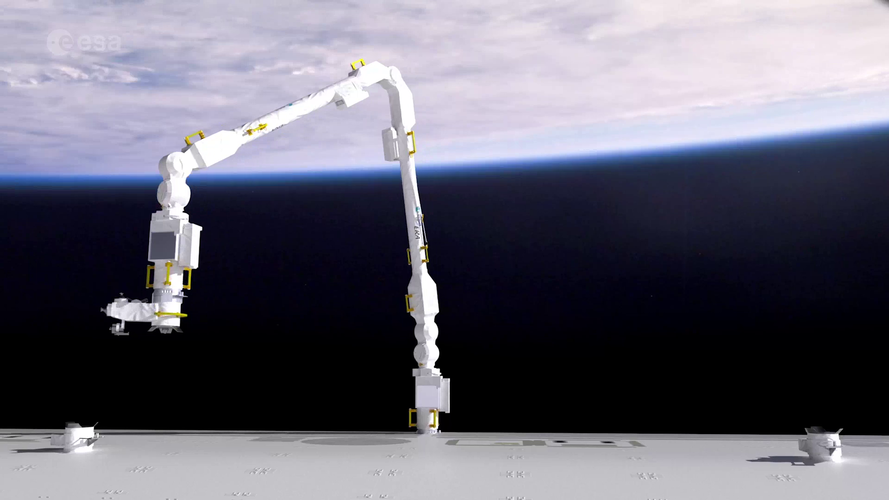 Video:
00:05:12
Video:
00:05:12
The European Robotic Arm (ERA) will be launched to the International Space Station together with the Russian Multipurpose Laboratory Module, called ‘Nauka’. ERA is the first robot able to ‘walk’ around the Russian segment of the Space Station. It has the ability to anchor itself to the Station and move back and forward by itself, hand-over-hand between fixed base-points. This 11-metre intelligent space robot will serve as main manipulator on the Russian part of the Space Station, assisting the astronauts during spacewalks. The robot arm can help install, deploy and replace elements in outer space
ERA is 100% made-in-Europe.
Sculpted by starlight: A meteorite witness to the solar system's birth

In 2011, scientists confirmed a suspicion: There was a split in the local cosmos. Samples of the solar wind brought back to Earth by the Genesis mission definitively determined oxygen isotopes in the sun differ from those found on Earth, the moon and the other planets and satellites in the solar system.
Early in the solar system's history, material that would later coalesce into planets had been hit with a hefty dose of ultraviolet light, which can explain this difference. Where did it come from? Two theories emerged: Either the ultraviolet light came from our then-young sun, or it came from a large nearby star in the sun's stellar nursery.
Now, researchers from the lab of Ryan Ogliore, assistant professor of physics in Arts & Sciences at Washington University in St. Louis, have determined which was responsible for the split.
Europa Clipper to determine whether icy moon has ingredients necessary for life
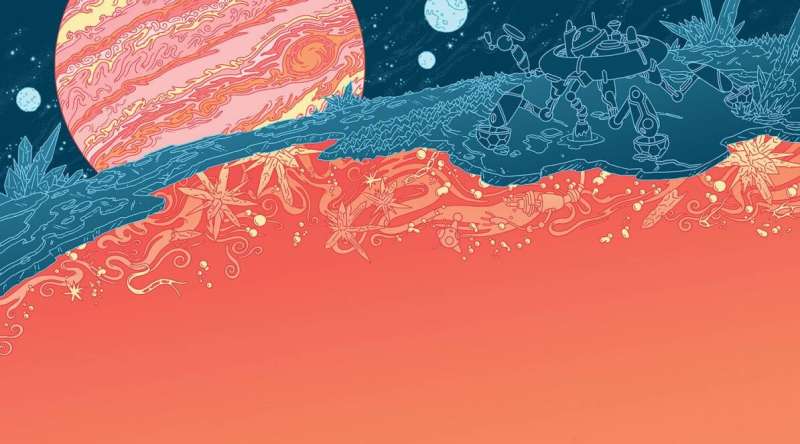
In 1610, Galileo peered through his telescope and spotted four bright moons orbiting Jupiter, dispelling the long-held notion that all celestial bodies revolved around the Earth. In 2024, when scientists expect to send the Europa Clipper spacecraft to investigate one of those moons, they too may find evidence that fundamentally alters our understanding of the solar system.
Europa is the sixth nearest moon to Jupiter and is roughly the same size as our own. Thanks to data retrieved by the Galileo space probe—launched in 1989 and named to honor the Italian astronomer—and the Hubble Space Telescope, scientists are almost sure that a salty, liquid ocean is hidden beneath Europa's icy surface, one so large that astronomers believe it could contain two times the water in all of Earth's oceans combined.
Europa itself has been around for 4.5 billion years, but its surface is geologically young, only about 60 million years old, suggesting that it has been continually resurfaced, perhaps through a process much like Earth's shifting plate tectonics. As Europa travels around Jupiter, its elliptical orbit and the planet's strong gravitational pull cause the moon to flex like a rubber ball, producing heat that's capable of maintaining an ocean's liquid state.
Image: This camera will be the eye of the ESA's asteroid mission
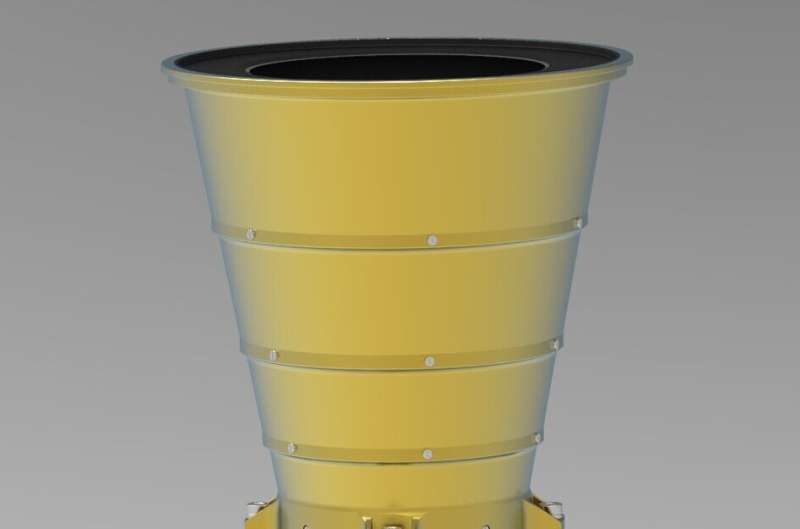
This is the main camera that ESA's Hera mission for planetary defense will be relying on to explore and maneuver around the Didymos asteroid system.
Hera—named after the Greek goddess of marriage—will be, along with NASA's Double Asteroid Redirect Test (DART) spacecraft, humankind's first probe to rendezvous with a binary asteroid system, a little understood class making up around 15% of all known asteroids.
The DART spacecraft—due for launch this November—will first perform a kinetic impact on the smaller of the two bodies. Hera will follow-up with a detailed post-impact survey to turn this grand-scale experiment into a well-understood and repeatable asteroid deflection technique.
Produced by Jena-Optronik in Germany, this lightweight camera is being supplied to OHB System AG, leading the Hera industrial consortium for ESA. The camera will be used both for spacecraft navigation and scientific study of the two asteroids' surfaces.
The camera is based on Jena-Optronik's existing ASTROhead design. ASTROhead has already been proven in space, aboard Northrop Grumman's Mission Extension Vehicle, MEV-1 in 2019, helping it perform a historic autonomous docking with a geostationary telecommunication satellite in order to extend the satellite's working lifetime.
A small satellite with a solar sail could catch up with an interstellar object
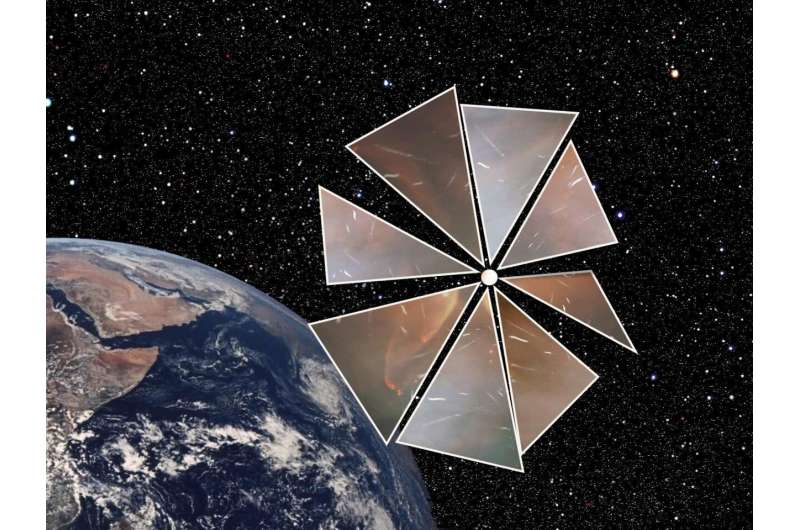
When 'Oumuamua, the first interstellar object ever observed passing through the solar system, was discovered in 2017, it exhibited some unexpected properties that left astronomers scratching their heads. Its elongated shape, lack of a coma, and the fact that it changed its trajectory were all surprising, leading to several competing theories about its origin: was it a hydrogen iceberg exhibiting outgassing, or maybe an extraterrestrial solar sail (sorry folks, not likely) on a deep-space journey? We may never know the answer, because 'Oumuamua was moving too fast, and was observed too late, to get a good look.
It may be too late for 'Oumuamua, but we could be ready for the next strange interstellar visitor if we wanted to. A spacecraft could be designed and built to catch such an object at a moment's notice. The idea of an interstellar interceptor like this has been floated by various experts, and funding to study such a concept has even been granted through NASA's Innovative Advanced Concepts (NIAC) program. But how exactly would such an interceptor work?




